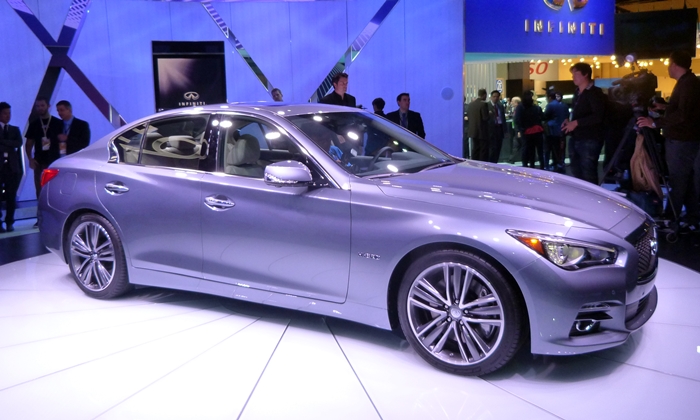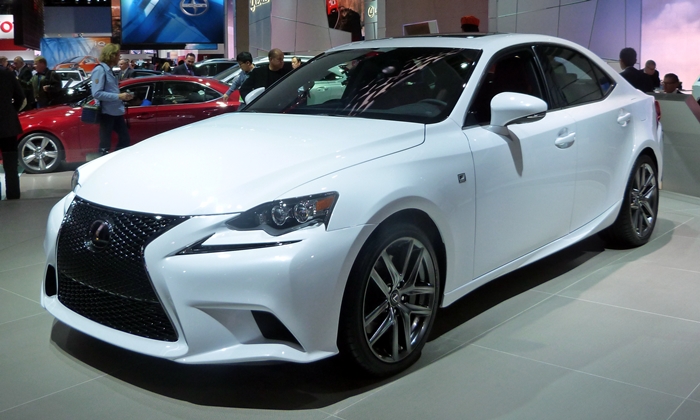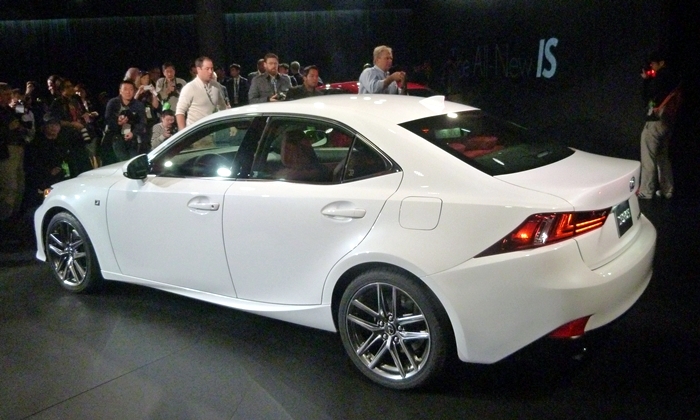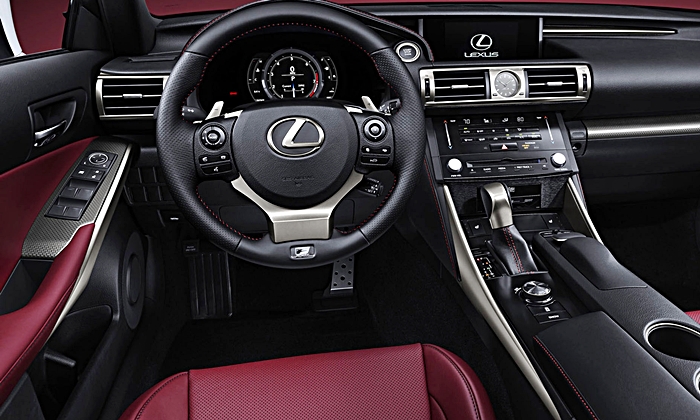Between the C7 Corvette and Cadillac ELR, General Motors received about 97 percent of the media’s 2013 NAIAS (Detroit auto show) love. But of the new cars introduced at the show, my personal favorite was the 2014 Lexus IS, which has received little love from other sources. How might I explain my deviance?
I don’t dislike the C7 or ELR. Both seem very well done, and at least the former will likely be a sales success. But there’s virtually no chance I’ll be buying either car in the coming decade. I have three kids, so I need more doors and more space. On top of this, there’s little way to enjoy the extreme capabilities of the Corvette on the roads in my area.
My next personal car is likely to be either a hot hatch or a compact rear-wheel-drive sedan. None of the former were introduced at NAIAS this year, but two of the latter were, by Lexus and Infiniti. In the past, I’ve preferred the Infiniti G37 to the Lexus IS 350. Why not with the upcoming generation?

To begin with, Infiniti will no longer offer a manual in its car, surrendering a substantial earlier advantage (Lexus will continue to not offer a manual with its big V6). Beyond this, the new Q50 (which replaces the G37 sedan) seems less about sport and more about luxury than the past car, yet its interior isn’t as stylish or as opulent as that in the larger M (which will be renamed the Q70). Similarly, the Q50’s exterior resembles the larger sedan’s, but with the curves toned down and some odd details added to the C-pillar. Overall, the Q50 seems a very nice car, just not one I feel much passion for.
With the new Lexus IS, most coverage has focused on the “boldest expression yet of the brand’s iconic spindle grille.” No one likes the look of this grille. I don’t personally like the look of this grille, and find it ridiculous to call anything that has only been around for a year “iconic,” but I don’t hate it like many people do. It’s better integrated into the overall design than the super-sized rectangle in the initial big-grille Audis that started the whole trend.
Also, I tend to focus on the side and quarter views of any car. And from the side I really like what Toyota has done with the exterior of the new IS. Compared to the current IS and to competitors from Infiniti and BMW, the new compact Lexus appears tighter and trimmer–despite a three-inch wheelbase extension. I especially like how the lines around the rear windows, fenders, and lights work together to draw your eye rearward.
Inside, the IS finally gets a usable rear seat. With a four-inch bump in rear legroom, the car moves from worst-in-class to nearly the best (the Infiniti is a little roomier). Beyond the amount of space, the seat is shaped and positioned to provide better support than most.
The real trick, as with the exterior, is growing the car without making it seem larger. From the driver seat (at rest, I haven’t yet driven the car) the new IS continues to feel sportily compact. The driving position, with a moderately lower seat than in the current car, is just about perfect. Lexus has resisted the trend to huge, laid back windshields, so that in the new car isn’t a deep tunnel away and the instrument panel beneath it remains compact. (Yes, a car can look sporty and attractive without automotive architecture from the Jetsons.) The front seats are both very supportive and very comfortable, a difficult combination to pull off, especially without adjustable bolsters.
Unlike in the Infiniti, the instrument panel focuses on driving rather than infotainment. Where the Infiniti’s instrument panel is dominated by a pair of touchscreens, inside the IS a single screen remains (as in the latest BMW 3) something of an afterthought. The main show is in the reconfigurable LCD instrument cluster, derived from that in the LFA supercar. An F-Sport model adds pervasive red-stitching to an otherwise relatively severe interior.
The new IS 350 will have the same engines as the current car. So the IS 250 will remain underpowered, while the IS 350 will have one of my favorite V6s. The larger six gets the eight-speed automatic currently restricted to the V8-powered IS-F. While I’d prefer a manual, this automatic is about as good as automatics get, with ultra-smooth shifts in casual driving and quick, direct shifts when you get on it.
Of course, I also like the Cadillac ATS a lot. Which car do I like better? Unfortunately, it’s not possible to say without driving the new Lexus. I like the exterior styling of the Lexus better, as the ATS’s body is a little too generic. Inside, the Cadillac might have an aesthetic edge, though its instrument cluster is much less attractive. But the Lexus has much better front seats and a roomier rear seat. I prefer the feel of the Lexus V6 and automatic transmission, but the Cadillac is available with a manual transmission (with the 2.0T engine, not the V6).
The main thing I don’t know: how the Lexus steers and handles. If the new IS substantially lags the Cadillac in this area, it might have to settle for second place on my personal ranking. But second place in a highly competitive segment, and this heavily dependent on a transmission option few other buyers want, isn’t a bad place to be.


